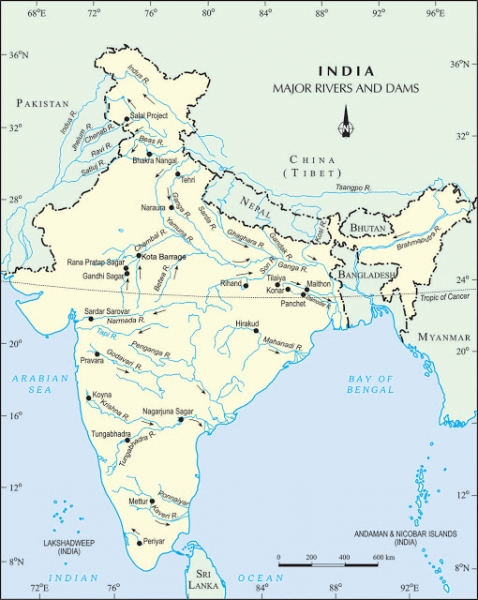Class X: Chapter 3 (Water Resources) Question & Answers
Q1. Based on the information given below classify each of the situations as 'suffering from water scarcity' or 'not suffering from water scarcity'.
(a) Region with high annual rainfall.
Ans: Not suffering from water scarcity.
(b) Region having high annual rainfall and large population.
Ans: Not suffering from water scarcity.
(c) Region having high annual rainfall but water is highly polluted.
Ans: Suffering from water scarcity.
(d) Region having low rainfall and low population.
Ans: Suffering from water scarcity.
Q2. Which one of the following statements is not an argument in favour of multipurpose river projects?
(a) Multi-purpose projects bring water to those areas which suffer from water scarcity.
(b) Multi-purpose projects by regulating water flow helps to control floods.
(c) Multi-purpose projects lead to large scale displacements and loss of livelihood.
(d) Multi-purpose projects generate electricity for our industries and our homes.
Ans: (c) Multi-purpose projects lead to large scale displacements and loss of livelihood.
Q3. Here are some false statements. Identify the mistakes and rewrite them correctly.
(a) Multiplying urban centre's with large and dense populations and urban lifestyles have helped in proper utilization of water resources.
Ans: Multiplying urban centre's with large and dense populations and urban lifestyles have resulted in overexploitation of water resources.
(b) Regulating and damming of rivers does not affect the river's natural flow and its sediment flow.
Ans: Regulating and damming of rivers affect the river's natural flow and its sediment flow.
(c) In Gujarat, the Sabarmati basin farmers were not agitated when higher priority was given to water supply in urban areas, particularly during droughts.
Ans: In Gujarat, the Sabarmati basin farmers were agitated when higher priority was given to water supply in urban areas, particularly during droughts.
(d) Today in Rajasthan, the practice of rooftop rainwater harvesting has gained popularity despite high water availability due to the Rajasthan Canal.
Ans: Today in Rajasthan, the practice of rooftop rainwater harvesting has declined in popularity because of high water availability due to the Rajasthan Canal.
Q4. Explain how water becomes a renewable resource.
Ans: Three-fourth of the earth's surface is covered with water, but only a small proportion of it is freshwater that can be used. This freshwater is mainly obtained from surface run off and ground water that is continually being renewed and recharged through the hydrological cycle or the water cycle. In this cycle majorly three processes that takes place, i.e. Evaporation, condensation and precipitation. The process of water cycle is never ending thus making water a renewable resource.
Q5. What is water scarcity and what are its main causes?
Ans: Scarcity of water means shortage of water or in other words imbalance between demand and supply. Main causes for water scarcity are:
(a) Overpopulation.
(b) Urbanization.
(c) Industrialization.
(d) Increase in agricultural production.
(e) Over-exploitation and mismanagement of water.
(f) Water Pollution.
(g) Variation in the seasonal and annual precipitation.
Q6. Compare the advantages and disadvantages of multi-purpose river projects.
Ans:

Q7. Discuss how rainwater harvesting in semi-arid regions of Rajasthan is carried out.
Ans: In the semi-arid regions of Rajasthan every house has built underground tankas to store rain water. These tankas are large and deep in size. Rainwater from rooftop will come down with the help of pipes and is collected in the tankas. The rainwater is stored so that it could be used for drinking during the dry season.
Q8. Describe how modern adaptations of traditional rainwater harvesting methods are being carried out to conserve and store water.
Ans: Rainwater harvesting means collecting of rain water. In this modern era several low cost techniques are available for rainwater harvesting. In many parts of rural and urban places in India rooftop rainwater harvesting has been adopted and it has been a great success. In places like Shillong, Meghalya nearly 15-25% of the total water requirement of household comes from rooftop rainwater harvesting. Tamil Nadu became the first state where rooftop rain water harvesting is made compulsory. In Gendathur a village in Karnataka nearly 200 houses have installed the rooftop rainwater harvesting system to meet their water needs.
Thus, in the modern time where the entire world is facing scarcity of water, rainwater harvesting system is helping the people to resolve the issue of water scarcity.
-----x-----X-----x-----


